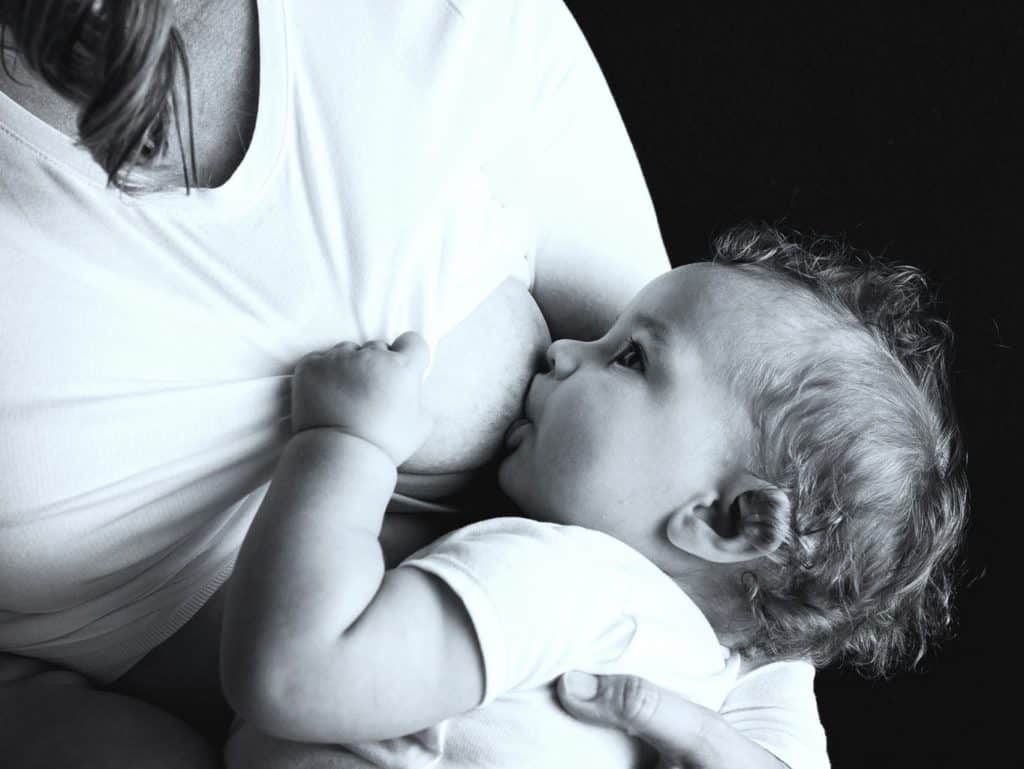
Tips to boost your milk supply
Breastfeeding is something wonderful, yet it can be challenging. Especially in the very beginning after birth many moms struggle a bit for different reasons. Some are afraid that their milk supply could be too low. If this is you, try out these 7 ways to increase your milk supply when breastfeeding.
Sometimes it is not easy to determine whether your milk supply is enough for your baby. If your child is healthy and growing well, everything is probably fine. However, if you are concerned, it is important that you seek advice early enough. If everything is fine, then you can at least put your mind at peace. And it prevents you from giving your baby unnecessary formula or baby food.
So, if you are unsure, contact a breastfeeding consultant or your midwife. They will examine whether you have low milk supply and monitor you during a breastfeeding session to see if your baby is latching properly. They may suggest that you adjust your breastfeeding position or the way you put your baby to latch so your little one can drink more efficiently. If it turns out then, you do have a low milk supply, then you can take action and try out these best tips to increase your milk supply when breastfeeding.
There is actually a lot you can do to boost your milk supply. Don’t give up, just try out different tips and see what works best for you personally.
First of all, let’s look at some information and facts about breastfeeding and milk supply.
What you need to know to increase your milk supply when breastfeeding your baby
Once your milk has come in, your breasts will produce milk based on the principle of “supply and demand”. Every time milk is taken, either by breastfeeding or by pumping, your breasts get the signal to produce more milk again.
Therefore, the more often and more effectively your baby drinks from your breasts, the more milk your body will produce. If your baby (for any reason, could be medical) does not drink enough milk while breastfeeding, it is important to pump regularly to keep up with the stimulation. That way you still have the signals sent to your breasts to continue to produce more milk.
On contrary, when feeding your baby with formula or baby food without pumping, that will reduce your natural milk supply. Your body will not receive a signal to produce more breast milk anymore.

Signs that your baby is not getting enough milk
Although low milk supply in the very beginning isn’t too rare, your baby may not get enough milk for other reasons in the first few weeks. It may not be breastfed frequently or long enough, especially if you are not breastfeeding on demand, but are trying to stick to a schedule.
These are the signs that your baby is truly not getting enough milk (for whatever reason):
Little weight gain
It is normal for newborns to first lose up to 10% of their birth weight in the first few days. But after that, they should gain at least 20 to 30g daily and be back up to their birth weight between days 10 to 14 after birth. If your baby has lost 10% (or more) of his or her birth weight and has not gained it back after five to six days, you should contact a doctor immediately.
Too little wet diapers
How often your baby wets a diaper a day is a good indication of whether your little one is getting enough milk or not. Check out this blog post on breastfeeding your newborn baby for more specific information on that.
Dehydration
If your baby has dark urine, a dry mouth or jaundice (yellow skin or eyes), or is lethargic and reluctant to drink, he or she may be dehydrated. Especially fever, diarrhea and vomiting or overheating can cause dehydration very easily for babies. If you notice any of these symptoms, contact a doctor immediately.
Signs that don’t mean your baby is not getting enough milk
Be aware that newborns usually drink very often. In fact, about ten to twelve times a day or roughly said, every two hours. That doesn’t mean you don’t have enough milk! Don’t forget that your baby also just needs the physical closeness to mummy sometimes. It might be hard to tell how much your baby actually drinks with each breastfeeding meal. That will vary from time to time.
So, the following situations are all perfectly normal and show no signs of low milk supply:
- frequent demand for breastfeeding
- your baby doesn’t want to be put down
- your baby wakes up at night
- short sessions of breastfeeding
- long sessions of breastfeeding
- your baby takes the bottle after breastfeeding
- sometimes your breasts feel softer than during in the first few weeks after birth
- your breasts no longer leak out milk, as maybe at the beginning
- you have small breasts
Medical reasons for low milk production
Please be aware that in rare cases low milk supply can be caused by a medical condition. A small number of moms have problems producing enough breast milk for the following reasons:
- Excessive blood loss (more than 500 ml) during childbirth or small fragments of the placenta left in the body may delay the milk coming in after birth.
- A polycystic ovary syndrome, diabetes, thyroid disease, or other hormonal disorders in the medical history.
- The rare medical condition of mammary hypoplasia, in which there is not enough milk-producing glandular tissue in the breast.
- Previous breast surgery or breast trauma.
If any of these apply to you, contact a breastfeeding consultant or midwife to find an individual way forward on your breastfeeding journey.

Disclosure: MyMommyHeart is a participant in the Amazon Services LLC Associates Program, an affiliate advertising program designed to provide a means for sites to earn advertising fees by advertising and linking to amazon.com
7 ways to increase your milk supply when breastfeeding
1. Breastfeed more often
Since you know the background of how your body naturally regulates your milk supply now, you can make use of it. Frequent breastfeeding and skin contact increase the outpouring of the hormone oxytocin and the hormone prolactin in your body which stimulates your breasts to produce more milk.
So, go ahead and practice the obvious. Place your baby on the breast and let it latch frequently. Always offer both breasts to your child when breastfeeding. (You can also switch sides forth and back within one feed if you find it helpful for you or baby.) Rather keep your child on one side for a shorter amount of time and then offer him or her the next side as well instead of just doing one longer feed on one side only. 10 to 15 minutes of breastfeeding per breast supports your natural milk supply more than one longer breastfeeding session on just one side.
2. Drink breastfeeding tea
Being well hydrated yourself is key for your milk supply when breastfeeding. Make sure you drink enough water, tea and unsweetened juices throughout your day.
Specific breastfeeding teas contain milk-forming spices which can support the stimulation of your milk production. You can either buy them for e.g. on amazon or in a pharmacy nearby or simply make them yourself.
Here are some herbs and spices for which the milk-forming effect has been scientifically proven:
- Fennel
- Anise
- Coriander
- Verbena
When you make the teas yourself, always make sure that the herbs are dosed correctly. You can also consult your midwife or doctor. In rare cases women experience allergic reactions from some of those herbal teas.
3. Warmth & heat
To stimulate your milk flow, try to warm your breast with a hot compress or a preheated towel before breastfeeding. The heat helps and supports the breast of being emptied more thoroughly. In that way your milk supply will be gently boosted.
4. Breast massage
Like the effect of warmth and heat, a breast massage supports the let down reflex and can therefore be helpful as well to get the breastfeeding session started and the breast emptied more thoroughly.
If you want to combine the two, you can massage your breasts is in the shower under warm water. Btw, that can also help you in case your baby stopped drinking whilst your breast was still quite full.
Warning: massage your breasts gently and do not try to “squeeze” milk out of them too hard. It could cause bruising on your chest otherwise.
5. Milk supply boosting foods
Some foods and beverages are said to be able to stimulate milk production. Not all of those seem to have the same helpful effect on all women, so it is up to you to try out what works well for your body and what might not work.
- Malt (In particular, malt beer is said to promote the production of breast milk. Make sure you get the alcohol-free version, momma!)
- Oats
- Asparagus
- Almonds
6. Lots of rest and relaxation
Rest and relaxation are important for a breastfeeding mom. If you start to stress yourself it has the negative effect of your breasts producing less milk. The best way to stimulate natural milk supply production is to relax. Spend a lot of time with your baby.
If you are struggling with not having enough milk, try to simply spend a day in bed with your child. Enjoy the time together and get lots of skin-to-skin contact. Put the baby to latch from time to time. In this setting of a calm atmosphere, your body is more likely to produce more of the hormones oxytocin and your milk supply will raise again.
If this is your second baby and you have a toddler running around, you might need to ask for support from family and friends.
If you need more practical tips on how to take small, daily mom breaks to become more rested and relaxed, check out these mom break ideas.
7. Pumping
If you want to stimulate your milk production additionally with a breast pump, you can try that out as well. Your breasts will get the same signals as if your baby was breastfeeding and the natural milk production will increase.
In this post from ItzAFamilyThing you find a list of different kind of portable breast pumps (specifically, but not exclusively for traveling).

Those are 7 ways how to increase your milk supply when breastfeeding your baby. Start today with trying out for yourself what works best for you and boost that milk supply for your little one.
If you are still pregnant, preparing for a baby, or a new mom, read more about breastfeeding your newborn baby and all you need to know for a good start after birth in this blog post.


Another great was is to do skin to skin. Just laying your baby on your chest releases oxytocin which helps milk supply
Very thorough post with encouraging tips! I think your bullet on breastfeed more often was the one that often tripped me up. My first time around, I was so confused about this and thought that pumping more would make things out of wack. I was so focused on trying to create a feeding schedule, but breastfeeding doesn’t quite work that way. I also started pumped for a few mins in the morning before work to increase my supply. This helped so much!
I found that coconut milk and coconut water helped me a lot as well as heat! Very good tips and advice here for breastfeeding.
Informative post for a new mommy. It is very essential to keep on feeding our baby frequently. there are different types of pulses that can increase breast milk too.